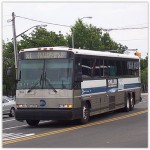 Eltingville is the name of a neighborhood on Staten Island, one of the five boroughs of New York City, USA. It is on the island’s South Shore, immediately to the south of Great Kills and north of Annadale. The main commercial area of Eltingville extends down Richmond Avenue, with offshoots heading north on Amboy Road and Hylan Boulevard.
Eltingville is the name of a neighborhood on Staten Island, one of the five boroughs of New York City, USA. It is on the island’s South Shore, immediately to the south of Great Kills and north of Annadale. The main commercial area of Eltingville extends down Richmond Avenue, with offshoots heading north on Amboy Road and Hylan Boulevard.
HISTORY
Originally called South Side, and later Seaside, the neighborhood owes its present name to a prominent family by the name of Elting which settled there in the late 19th century. It was the southern terminus of the Staten Island Railway until 1860, when the line was extended to Tottenville. The community’s main business district sprang up around the railroad station, which is located a short distance west of the intersection of Amboy Road and Richmond Avenue.
It is probably with the neighborhoods of Eltingville and Great Kills in mind that New York Telephone named atelephone exchange “Honeywood” in the 1920s; this exchange, which also served Annadale and Huguenot, was retired from service in 1959, but a local business establishment — Honeywood Liquors on Hylan Boulevard — remained for decades as a reminder of the exchange’s existence. When Honeywood 6 and nearby Tottenville 8, with operators connecting all calls, converted to dial service the combined exchanges became Yukon 4.
In the early 20th century, Eltingville was settled by Scandinavians, predominantly Norwegians. There were so many Scandinavian surnames that people would differentiate families by trade or other defining characteristics with nicknames such as “delicatessen Hansen”, “fish Hansen”, “two-family” Hansen, etc. Other family names included Johnson (the son ending is accurate though not as common as the sen ending for Norwegians), Erickson, Ronning, Nygren, Bundesen and Swanson. In Eltingville town, one could buy herring in wooden barrels which would be taken home and pickled. The Optimo Cigar store was originally run by a Norwegian man Paul Alan Moe. The Eltingville Lutheran church, which has lost most of its congregation, was founded by Norwegians, including Henry W. Erickson, who was a charter member of the congregation and the contractor who built the church. Eltingville Lutheran was a thriving support base for this community. Many of the older homes built in Eltingville, and other parts of the South Shore, were built by Scandinavian carpenters, including Henry W. Erickson. Another prominent builder was Ernst Nilsson, who emigrated from Sweden at the age of 12 making himself into a millionaire. Many of these homes continue to be torn down, and little is documented about the contributions of these immigrants.
Beginning in the mid-1960s, Eltingville, like many other Staten Island neighborhoods, was the scene of massive new home construction, replacing the farmland that had heretofore predominated. This caused logistical problems, chiefly a lack of sewer lines, which then needed to be built. As a result, local traffic frequently had to be detoured from many main thoroughfares, including a large section of Hylan Boulevard in the early 1990s.
Like most of the south shore of Staten Island, Eltingville has a large Italian-American population with many Italian-owned businesses, including Giovanni’s Ristorante, John Vincent Scalia Funeral Home, Portobello Cafe, DeMonte’s Salumeria, Sure Electrical Contracting, Carlo’s Fish Market, DeRosa & Sons, Pastosa Ravioli, and a large number of pizzerias. The offices of State Senator Andrew Lanza and New York City Councilman Vincent Ignizio are also located on Richmond Avenue in the neighborhood. There is a smaller number of Irish-Americans as well as a growing population of Russians and other ethnic groups.
For many years, the Eltingville train station had an Optimo cigar store situated adjacent to the steps leading up to the platform. The chain of Optimo cigar stores was once an iconic sight around the five boroughs of New York City. The Optimo store has been gone from the Eltingville station since the 1990s, allegedly due to a fire, although two fluted, Greek-style columns from the store remain on the site as a reminder of the store.

